Chapter 2: Ancient Near Eastern Art
0.0(0)
0.0(0)
Card Sorting
1/31
Study Analytics
Name | Mastery | Learn | Test | Matching | Spaced |
|---|
No study sessions yet.
32 Terms
1
New cards
Ziggurats
The first great buildings of the ancient world; were made of baked mud, and they were tall, solid structures that dominated the flat landscape.
2
New cards
Lascaux
A network of caves near the village of Montignac, in the department of Dordogne in southwestern France.
3
New cards
Lamassus
A Mesopotamian celestial being with a human head, bull's body, and wings.
4
New cards
Cuneiform
a system of writing in which the strokes are formed in a wedge or arrowhead shape
5
New cards
Apotropaic
having the power to ward off evil or bad luck
6
New cards
Sumerian art
It has realistic-look-ing figures acting out identifiable narratives.
7
New cards
Negative space
empty space around an object or a person, such as the cut-out areas between a figure’s legs or arms of a sculpture
8
New cards
Nudity
A sign of debasement; only slaves and prisoners are nude.
9
New cards
Hierarchy of scale
a system of representation that expresses a person’s importance by the size of his or her representation in a work of art
10
New cards
Local god
An advocate for a given city in the assembly of gods.
11
New cards
gods
In the Sumerian world, the \_____ symbolized powers that were manifest in nature.
12
New cards
Temple
Became the center point of both civic and religious pride.
13
New cards
Bent-axis plan
ascending the stairs requires angular changes of direction to reach the temple
14
New cards
Cella
the main room of a temple where the god is housed
15
New cards
Whitewash
was used to disguise the mud appearance; hence the modern name of White Temple.
16
New cards
Uruk
May be the first true city in history; the first with monumental architecture.
17
New cards
Anu
The god of the sky, the most important Sumerian deity.
18
New cards
Votive
Offered in fulfillment of a vow or a pledge
19
New cards
Ground line
a baseline upon which figures stand
20
New cards
Ground plan
the map of a floor of a building
21
New cards
Register
a horizontal band, often on top of another, that tells a narrative story
22
New cards
Lapis lazuli
a deep-blue stone prized for its color
23
New cards
Shallow relief sculpture
an Assyrian specialty, although the lamassus are virtually three-dimensional as they project noticeably from the walls they are attached to.
24
New cards
Capital
the top element of a column
25
New cards
Apadana
an audience hall in a Persian palace
26
New cards
Hypostyle hall
An indication of one of the many cultures that inspired the complex.
27
New cards

White Temple and its ziggurat
* Buttresses spaced across the surface
* tapers downward so that rainwater washes off
* resembles a mountain
* Bent-axis plan
* tapers downward so that rainwater washes off
* resembles a mountain
* Bent-axis plan
28
New cards
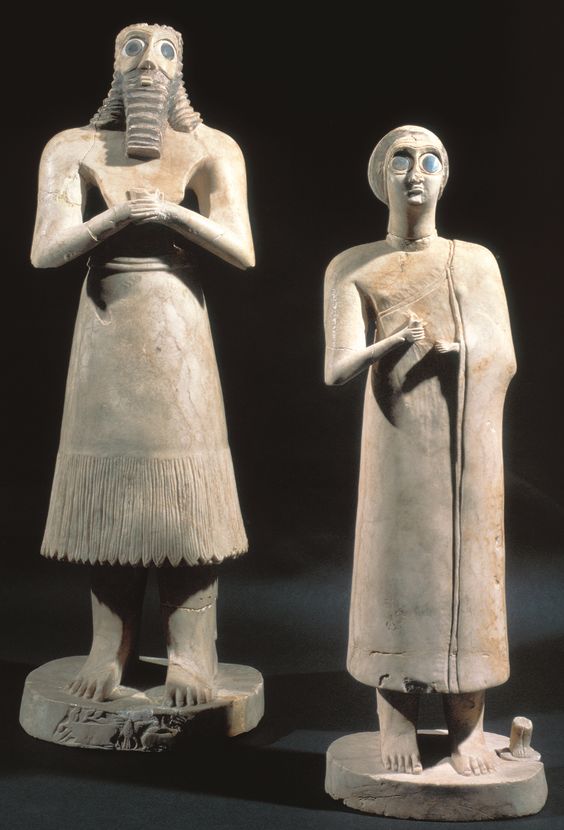
Statues of votive figures
* different heights
* hands are folded - gesture of prayer
* huge eyes; arms and feet cut away
* placed in a temple to pray before a sculpture of a god.
* hands are folded - gesture of prayer
* huge eyes; arms and feet cut away
* placed in a temple to pray before a sculpture of a god.
29
New cards
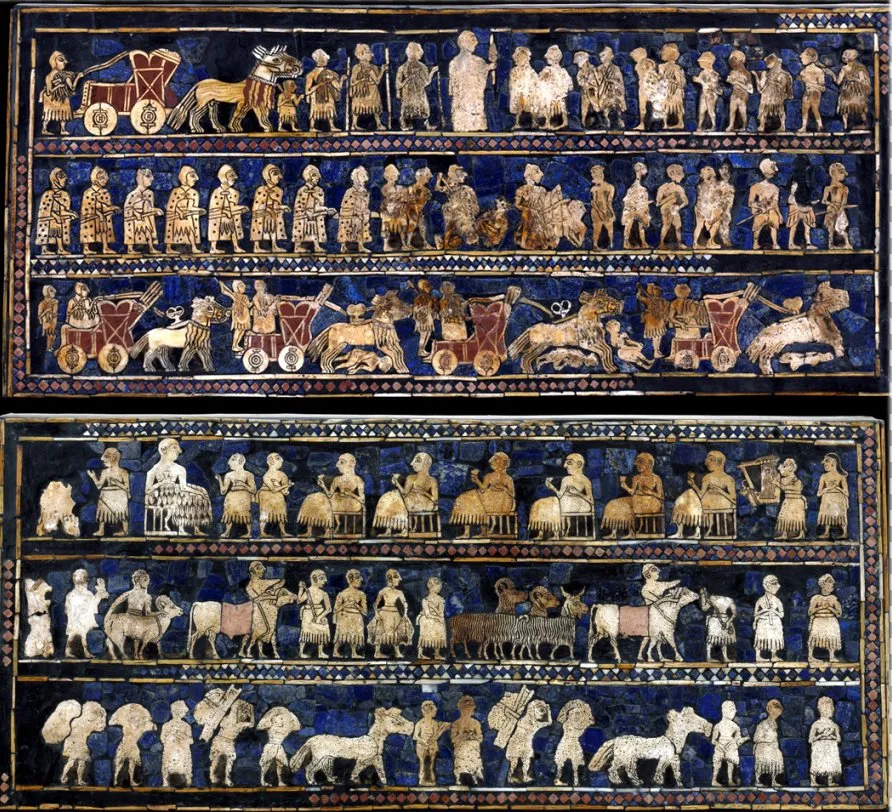
Standard of Ur
* wood inlaid with shell, lapis lazuli, and red limestone
* broad frontal shoulders; bodies in profile; twisted perspective
* reflects extensive trading network
* Has two sides: War Side and Peace Side
* broad frontal shoulders; bodies in profile; twisted perspective
* reflects extensive trading network
* Has two sides: War Side and Peace Side
30
New cards
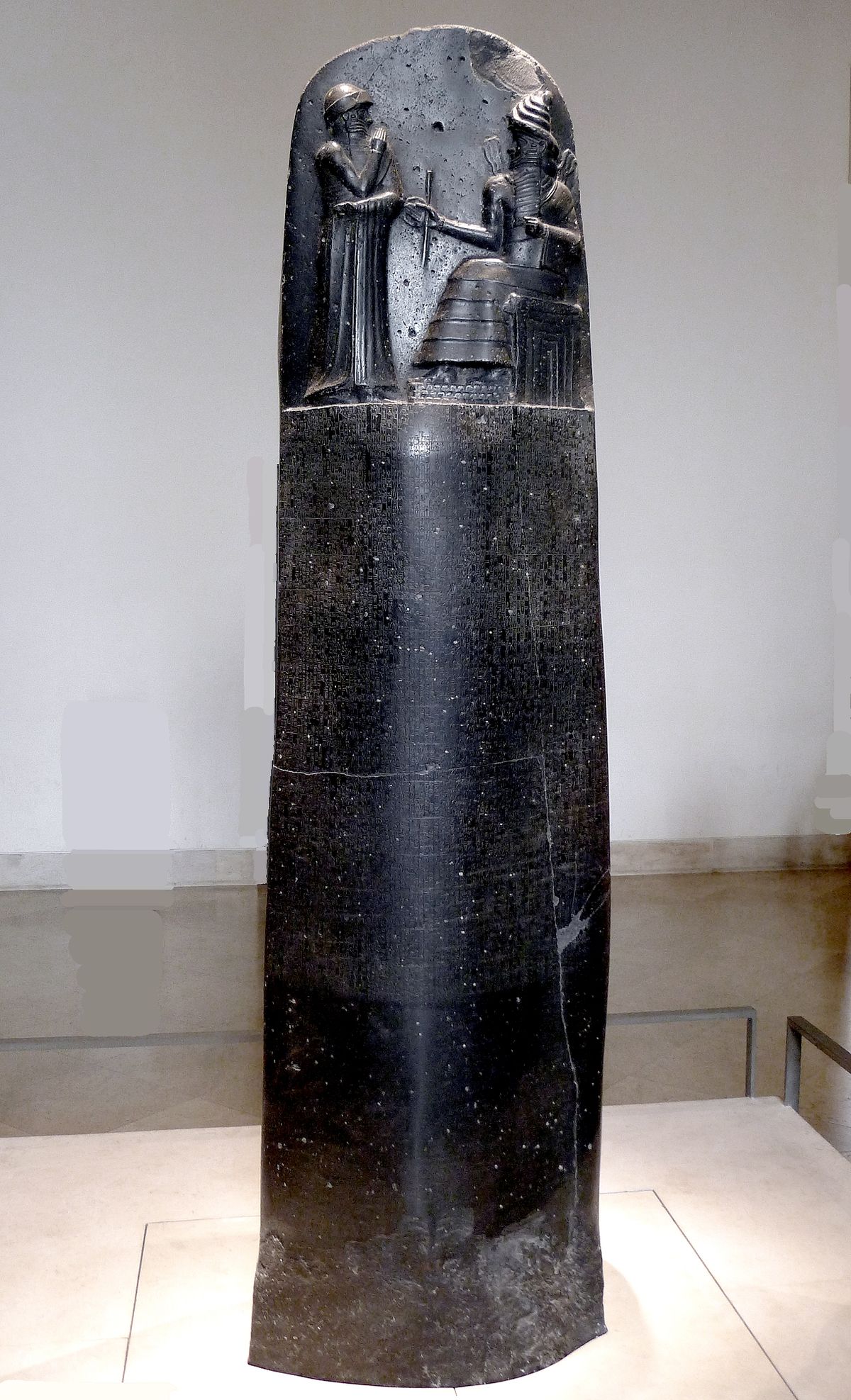
Code of Hammurabi
* Written in cuneiform | Akkadian language
* One of the earliest law codes; 300 entries
* One of the earliest law codes; 300 entries
31
New cards
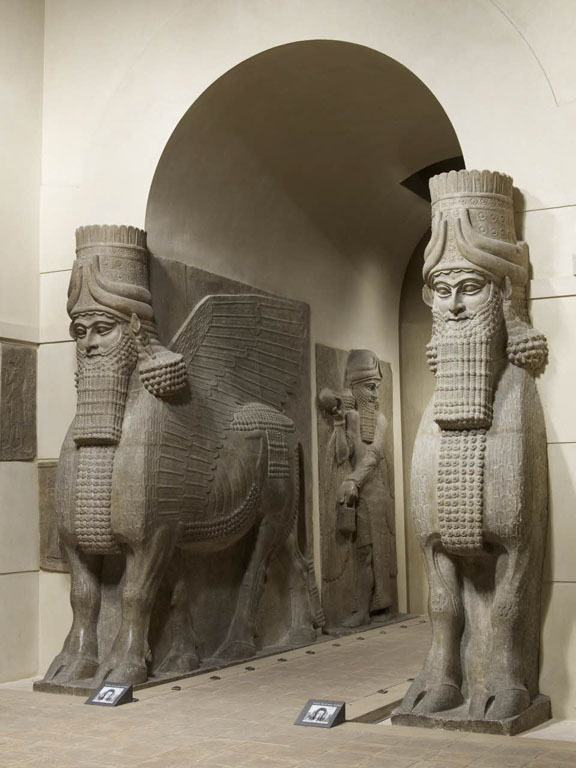
Lamassu
* Human-headed winged animal guardian figures
* Meant to hold up the walls and arch of a gate.
* Meant to ward off enemies both visible and invisible.
* Carved from a single piece of stone.
* Meant to hold up the walls and arch of a gate.
* Meant to ward off enemies both visible and invisible.
* Carved from a single piece of stone.
32
New cards
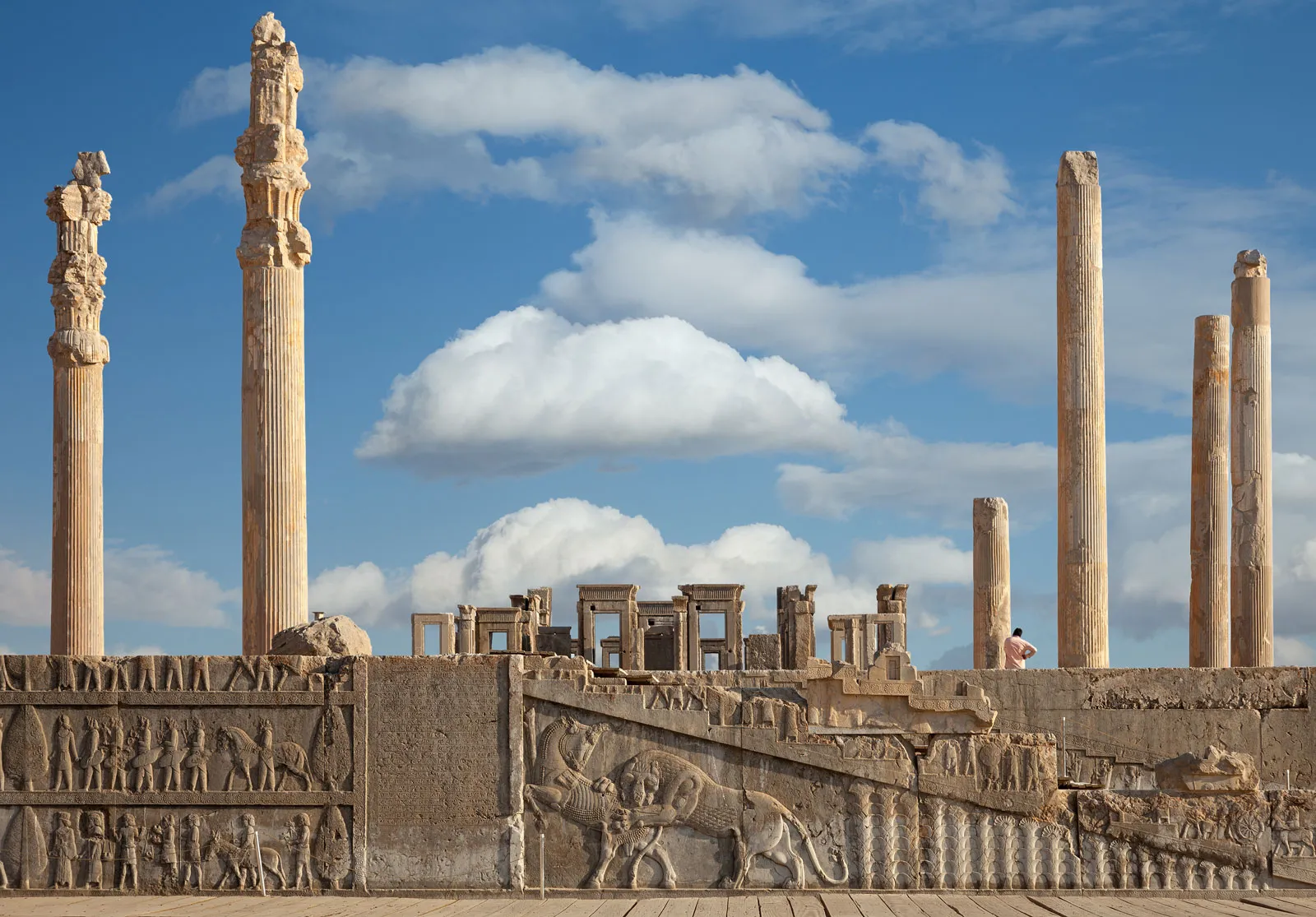
Apadana of Darius and Xerxes
* Built for lavish receptions and festivals
* proudly proclaim this complex as the seat of a great empire.
* Built by Darius I and Xerxes I
* Destroyed by Alexander the Great
* proudly proclaim this complex as the seat of a great empire.
* Built by Darius I and Xerxes I
* Destroyed by Alexander the Great